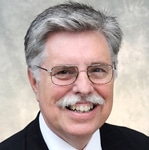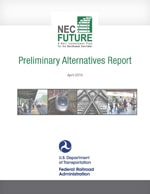
“We are extremely pleased with the progress Amtrak has made under the leadership of Joe Boardman,” said Chairman Tony Coscia. “The changes Joe is managing within the railroad are resulting in real accomplishments and it is important for him to stay on, continue his work and provide leadership for the challenges and opportunities that lie ahead.”
At its May meeting, the Amtrak board of directors approved a two-year renewable contract for Boardman, who was appointed president and CEO in November 2008.

“As a result of the good work Amtrak employees across the company are doing to implement our plans and produce our achievements, the board of directors asked me to continue in my role,” said Boardman. “Key to our current success is our improved financial position and our plans for growth are made more attainable because Amtrak is covering more of its operating costs, and costs are under control and in line with industry standards.”
Under Boardman’s leadership, Amtrak has experienced many accomplishments including record ridership and revenue, continued reductions in the need for federal operating support, a significant reduction of debt, the best ever system-wide on-time performance, expansion of state-supported services, the introduction of Wi-Fi service and eTicketing, and the creation and implementation of a corporate strategic plan.
In addition, he is managing new equipment orders for Northeast Corridor (NEC) and long distance services, a major planning effort for the development of next-generation high-speed rail, a comprehensive employee safety program, enhanced security initiatives and numerous capital projects to improve Amtrak infrastructure, stations, maintenance shops and other facilities.
On his first day at Amtrak during the 2008 Thanksgiving holiday travel period, Boardman walked the platforms at Washington Union Station, greeting passengers and talking with employees and has continued that practice whenever and wherever he travels. It is not uncommon to see him speaking to passengers aboard a train or visiting with employees out on the railroad at crew bases, rail yards, stations and other locations. He has logged over 200,000 miles traveling on Amtrak trains during his tenure.
Joseph H. Boardman was appointed president and chief executive officer of Amtrak by its board of directors in November 2008. Under his leadership, Amtrak has improved its operating and financial performance, and is building the equipment, infrastructure and organization needed to ensure its strong growth continues. The company is investing in projects critical for enhancing the passenger experience and essential for supporting its national network of intercity and high-speed rail services. In addition, Amtrak’s next-generation high-speed rail vision will provide a global competitive advantage for the United States.
Before joining Amtrak, Boardman was the administrator of the Federal Railroad Administration (FRA), an agency under the U.S. Department of Transportation, and also served as a member of the Amtrak Board of Directors. Prior to his position at FRA, he was the longest serving commissioner of the New York State Department of Transportation.
 The Federal Railroad Administration is currently managing a comprehensive planning effort to define, evaluate and prioritize future levels of investment in the Northeast Corridor (NEC) through 2040.
The Federal Railroad Administration is currently managing a comprehensive planning effort to define, evaluate and prioritize future levels of investment in the Northeast Corridor (NEC) through 2040.